ON Semiconductor: Outlook for 2017
David Somo, Senior Vice President , Corporate Strategy and Marketing ON Semiconductor

2016 was a challenging year for the semiconductor industry as it continued to face global macroeconomic headwinds. China saw GDP growth continue to slow to around 6.7% and the US experienced sub 2% GDP growth, while other global economies were relatively flat in 2016. This represents the third consecutive year of lackluster global GDP growth of slightly below 3%. As a mature sector, the semiconductor industry closely follows global GDP expansion.
In some ways, 2016 showed similarities to 2015 with consolidation remaining high on the agenda. Through acquisition, companies can continue to achieve growth in a relatively flat market while having the requisite size and scale to deliver the R&D necessary to realize ever-more complex integrated solutions and products.
ON Semiconductor’s goal is always to outperform the market; and we continued to achieve this in 2016. Our strategy combines a focus on developing innovative solutions for key application areas with identifying strategic acquisitions. Significant growth areas for us include automotive, Internet of Things (IoT), and high-performance power conversion (HPPC) and motor control.
Through the acquisition of Fairchild, we are now firmly established as a Tier 1 semiconductor manufacturer that is not only a leader in power semiconductors, but also offers a distinct competitive advantage in the aforementioned higher growth areas. Our comprehensive portfolio of power discretes, ICs and power module products covers solutions across low, medium and high voltage technologies allowing us to better serve the full range of requirements in many systems in the automotive, industrial and wireless device end-markets. This further strengthens our ability to gain market share and stay ahead of the industry growth curve.
Perhaps more than any other area of industry, the electronics sector continues to advance and innovate quickly, driven by, and indeed driving, exciting sectors such as the IoT (including industry 4.0), portable communication and the automotive industry. We will continue to see exciting developments in all of these areas, including advanced driver assistance systems (ADAS) as we evolve to connected cars and semi and, ultimately, fully autonomous vehicles.
The companies that will succeed in this fast-paced environment will be those that combine scale in terms of technology portfolio and ability to innovate with a solutions-based approach that allows customers to focus efforts on their own core competencies.
Looking forward to 2017, the consensus among analysts seems to be that the semiconductor industry will experience low single digit growth through the year. We also expect to see further consolidation as companies look to achieve the scale necessary for high-value investments. At the technology level, it is likely that semiconductor manufacturers will continue their evolution to supplying and establishing a comprehensive set of technologies and ecosystems that go beyond the component – in effect growing their value with customers by providing access to complete solutions that address challenges ranging from the board to the cloud.
Design tools and reference designs provide a clear demonstration of this philosophy and one in which ON Semiconductor has invested heavily. Examples can be seen in the recent introduction of modular IoT and wearable development kits that provide engineers with all of the hardware and software building blocks needed to speed the evaluation, design and implementation of applications. These tools are backed up by strategically located engineering support and application specialists, In the case of ON Semiconductor, this takes the form of the company’s Solutions Engineering Centers (SECs) that too have, and will continue to benefit from significant investment.
Bolstered by the Fairchild acquisition, our plans are to leverage our broad product portfolio, packaging expertise, scale and global operations to provide comprehensive, differentiated solutions that help customers accelerate time-to-market and time-to-revenue across a variety of applications.
We have identified strategic growth opportunities in a number of areas including automotive, the IoT, HPPC and motor control. These will drive the development of differentiated solutions such as power, analog, and sensing products that support continued vehicle electrification, LED lighting and the wider adoption of autonomous driver assist systems. We will also see advances in sensor, connectivity, processor and power technologies optimized for IoT designs and emerging industry 4.0 applications amongst others.
Evolution rather than revolution is generally the way that new technologies and ways of working are adopted and there is no reason to think the areas mentioned will be any different. IoT encompasses many applications, but if we look specifically at industrial IoT, we believe there will be a ramp-up of activity associated with areas such as smart buildings and industrial automation. With respect to autonomous driving, 2017 will see new sensor and vision technologies and solutions that support ADAS applications for semi-autonomous cars and that will provide the platforms needed to move towards the ultimate goal of fully autonomous vehicles.
The challenges that ON Semiconductor faces are the same as those faced by most semiconductor manufacturers operating in a global market. However, the company is well-positioned – not least in terms of technology, breadth of portfolio, application focus, R&D, operations and supply chain – to address these challenges and retain its competitive advantage and technology leadership.








